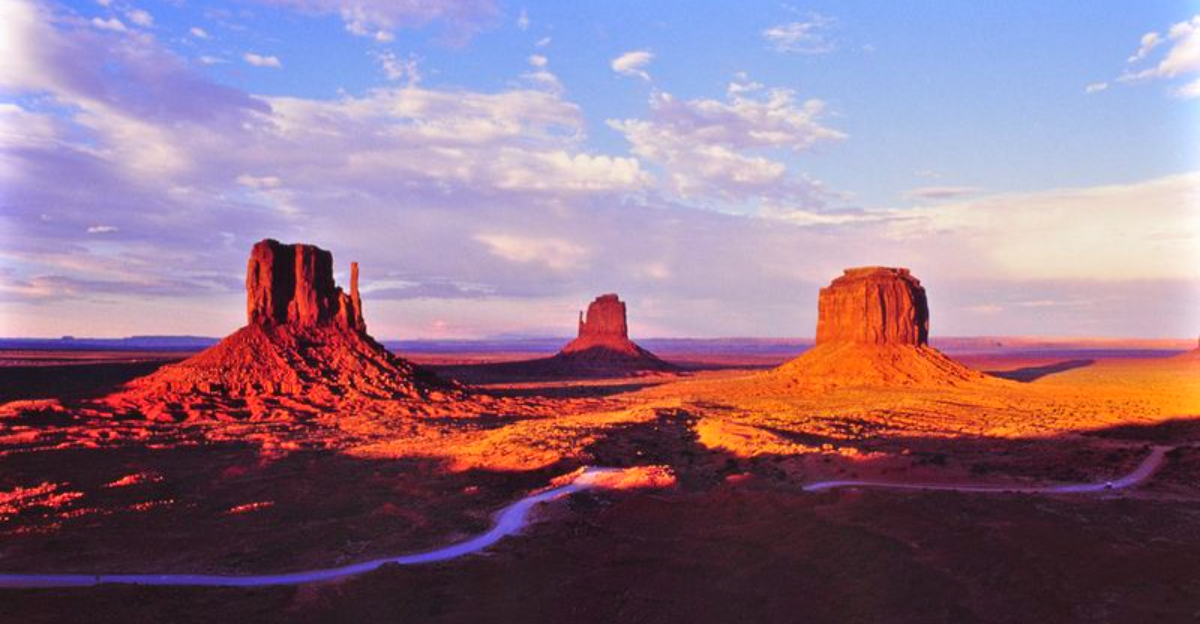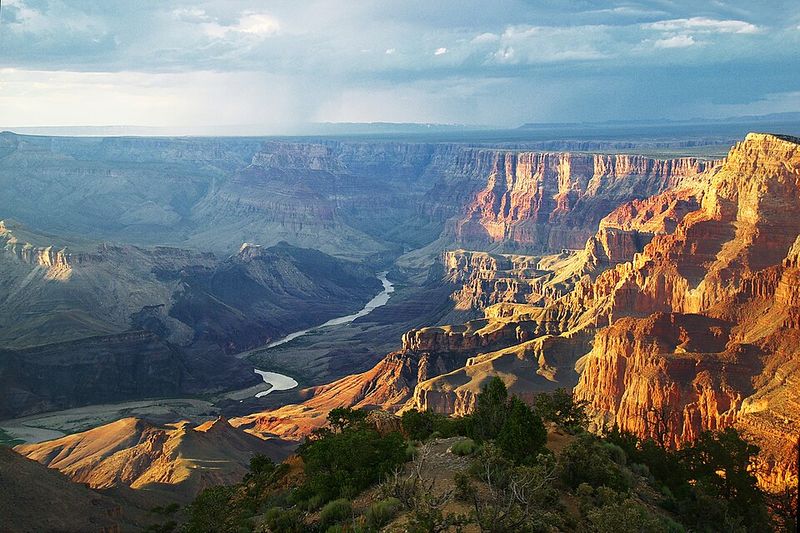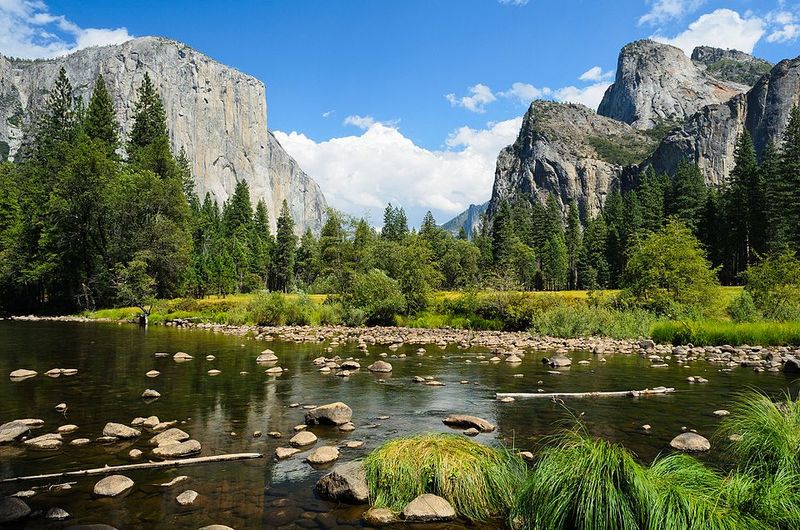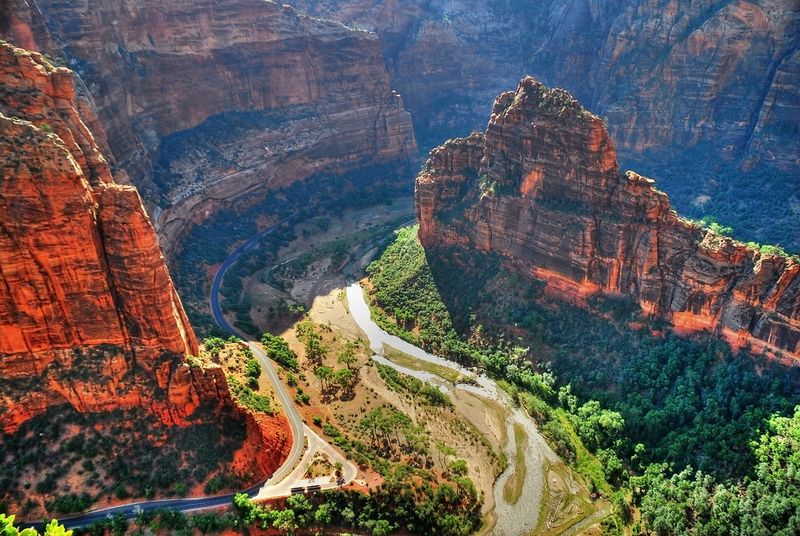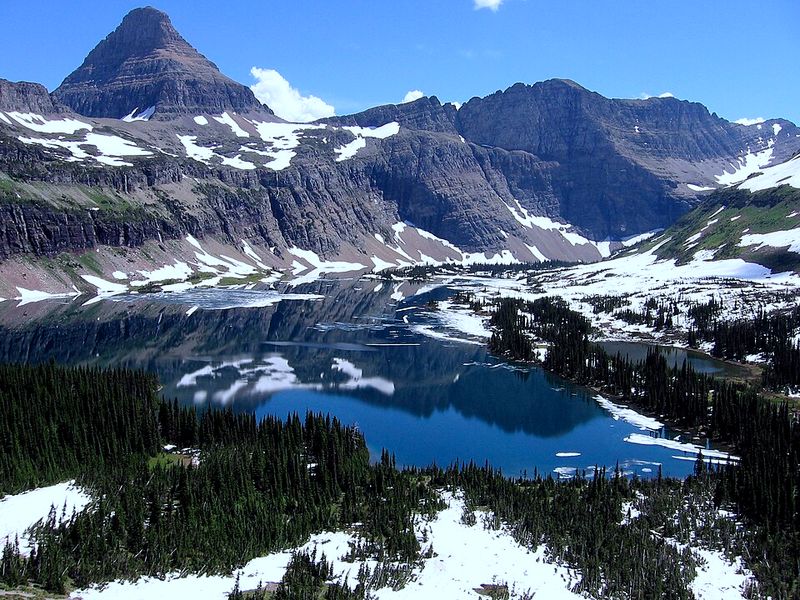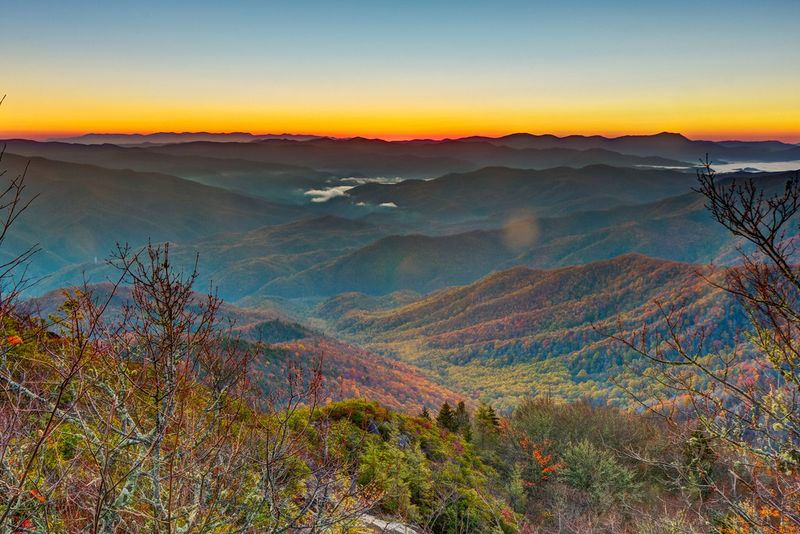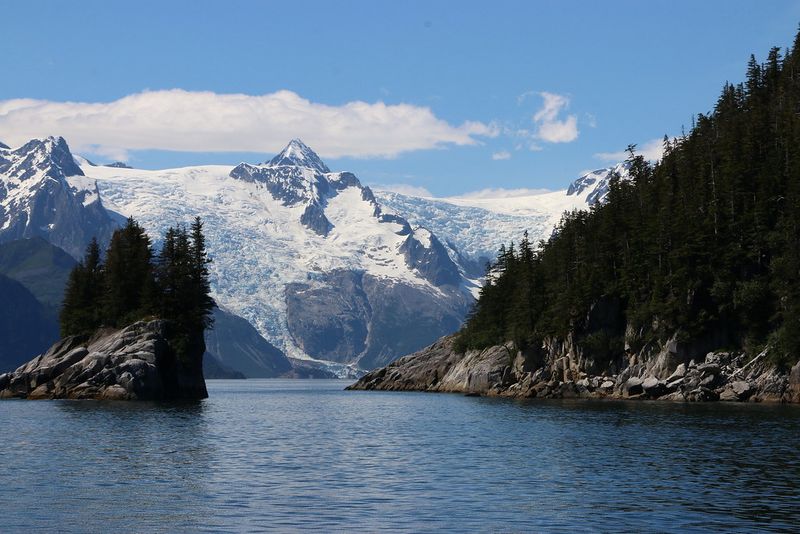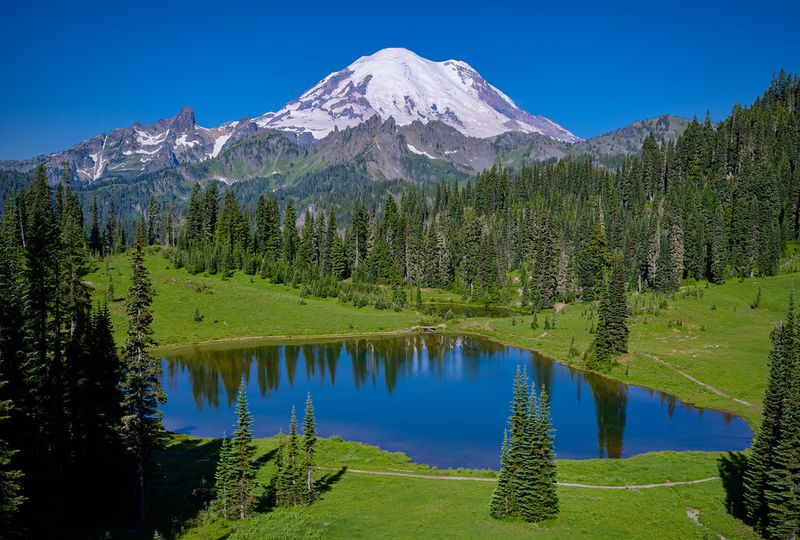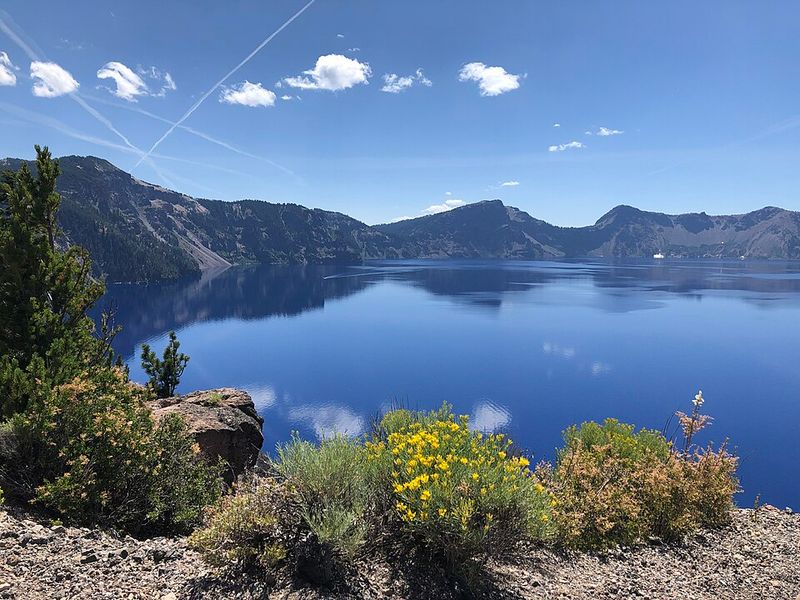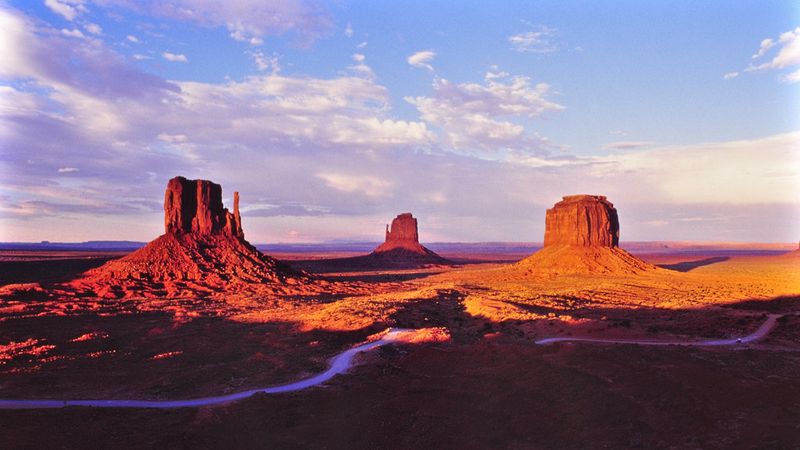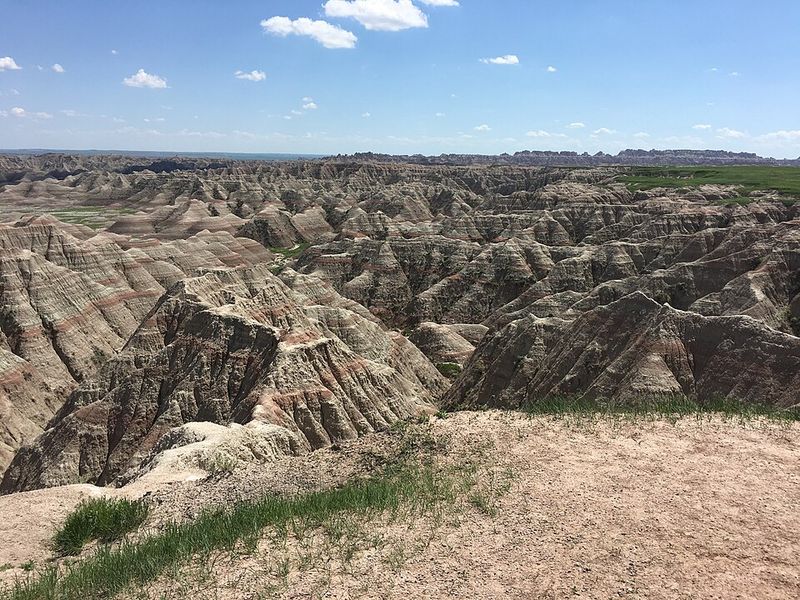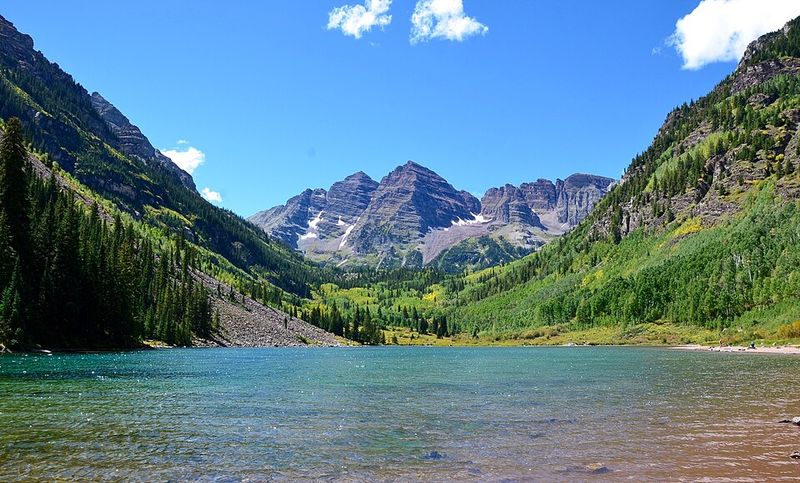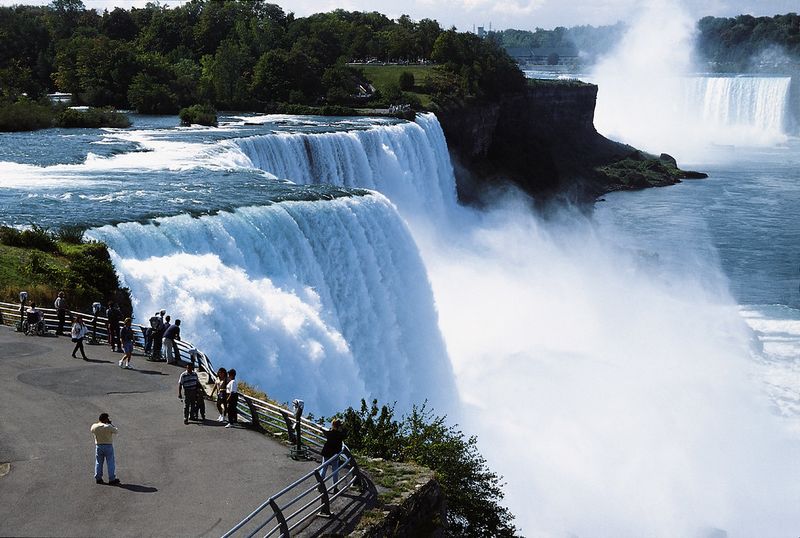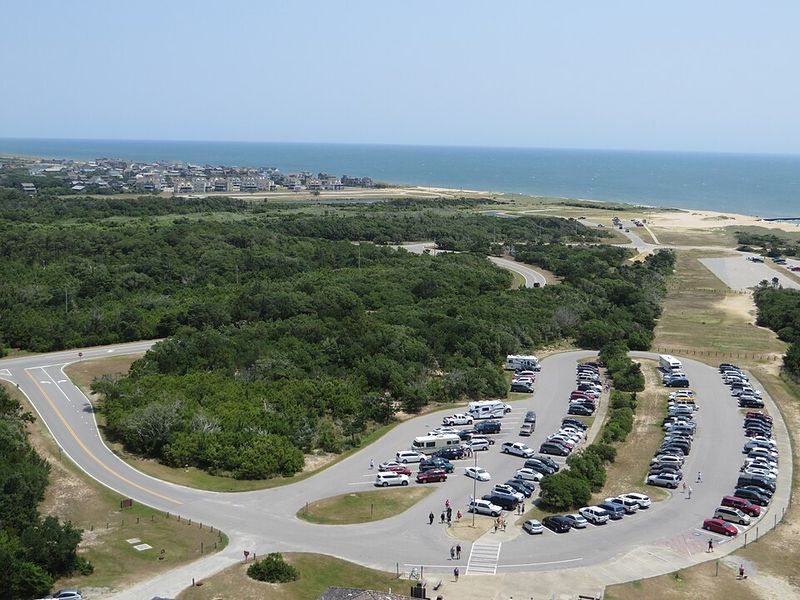America stretches from coast to coast with landscapes that will leave you speechless. From towering mountains and deep canyons to wild coastlines and colorful deserts, our country holds some of the planet’s most stunning natural treasures. Whether you love hiking, photography, or simply standing in awe of nature’s power, these spots deserve a place on your bucket list. Pack your bags and get ready to explore the most jaw-dropping destinations across the United States.
1. Grand Canyon, Arizona
Standing at the rim feels like stepping onto another planet. The Colorado River has spent millions of years carving through rock, creating a chasm so vast your brain struggles to process the scale. Layer after layer of ancient stone tells Earth’s history in shades of red, orange, and cream.
Mather Point and Yavapai Point offer front-row seats to sunrise and sunset magic, when the canyon glows like it’s lit from within. Plan your trip between March and May or September through November to dodge extreme heat and heavy crowds. Bring plenty of water and a camera with extra memory because every angle demands a photo.
2. Yosemite National Park, California
El Capitan rises like a granite fortress nearly 3,000 feet straight up, while Half Dome’s distinctive profile has become one of the most recognized silhouettes in the world. Waterfalls thunder down cliff faces in spring, their mist creating rainbows that dance in the sunlight. Ancient sequoias stand as silent witnesses to centuries of change.
Glacier Point rewards visitors with a panoramic overlook that takes in the entire valley floor. Visit in May or June when snowmelt feeds the waterfalls to their fullest glory, or come in early fall for crystal-clear skies and smaller crowds.
3. Yellowstone National Park, Wyoming/Montana/Idaho
Geysers shoot boiling water hundreds of feet skyward on a schedule only nature understands. Old Faithful remains the star performer, but the Grand Prismatic Spring steals hearts with its psychedelic rings of orange, yellow, and blue created by heat-loving bacteria. Bison wander the roads like they own the place because, honestly, they kind of do.
The Grand Canyon of the Yellowstone offers a completely different spectacle, with the Yellowstone River plunging over falls into a golden-walled gorge. Summer months bring the best access, though spring and fall reward patient visitors with active wildlife and fewer tour buses.
4. Zion National Park, Utah
Red rock walls soar so high above you that craning your neck still doesn’t capture their full height. The Virgin River has carved a masterpiece through Navajo sandstone, creating slot canyons where sunlight filters down in golden beams. Hiking through The Narrows means wading right up the river itself, with towering walls pressing in from both sides.
Always check water flow conditions before venturing into slot canyons, as flash floods can turn peaceful streams into raging torrents. Spring and fall offer the sweet spot of comfortable temperatures and manageable water levels, making your adventure both safe and spectacular.
5. Glacier National Park, Montana
Jagged peaks pierce the sky like broken glass, their slopes still holding patches of ancient ice. Going-to-the-Sun Road winds through some of the most dramatic alpine scenery on the continent, each hairpin turn revealing another postcard view. Hidden Lake Overlook near Logan Pass delivers exactly what its name promises, with crystal-clear water reflecting surrounding mountains.
Mountain goats pose on rocky outcrops while marmots whistle warnings from their boulder homes. July through September provides the only reliable access to high-elevation areas, as snow blocks roads and trails well into summer. Bring layers because mountain weather changes faster than your mood on a Monday morning.
6. Acadia National Park, Maine
Where mountains meet the sea, Acadia offers a rare combination of granite peaks and crashing Atlantic waves. Cadillac Mountain claims bragging rights as the first place to see sunrise in the United States during certain months, though you’ll need a vehicle reservation to witness dawn from the summit. Historic carriage roads wind through forests and around ponds, perfect for biking or leisurely walks.
September and October transform the landscape into a riot of fall colors that rival anything Vermont can offer. June brings fields of purple lupines that carpet meadows and roadsides. The rocky coastline looks dramatic in any season, with tide pools revealing secret worlds between the waves.
7. Great Smoky Mountains National Park, Tennessee/North Carolina
Blue mist hangs over ridge after ridge, creating the smoky effect that gave these mountains their name. As America’s most-visited national park, the Smokies charm millions with their accessible beauty and rich history. Historic cabins and churches dot Cades Cove, where deer and black bears often make appearances alongside the human visitors.
Spring wildflowers carpet the forest floor in April and May, while mid-October brings leaf-peepers from across the country. Winter offers a quieter experience, with fewer crowds and occasional snow dusting the peaks. The park charges no entrance fee, making natural beauty accessible to everyone regardless of budget.
8. Nā Pali Coast, Kauai, Hawaii
Emerald ridges plunge straight into turquoise water, creating one of the most dramatic coastlines on Earth. These cathedral-like cliffs rise thousands of feet, their fluted faces carved by millions of years of rain and wind. Waterfalls appear and disappear depending on recent rainfall, adding white ribbons to the green tapestry.
Boat tours offer the most comprehensive views, though the Kalalau Trail provides an up-close perspective for adventurous hikers willing to tackle challenging terrain. Permits are required for overnight camping and certain trail sections. May through September brings calmer seas and better boat-tour conditions, though the coast maintains its magic year-round. Helicopter tours provide aerial perspectives that reveal hidden valleys inaccessible any other way.
9. Denali National Park, Alaska
North America’s tallest peak dominates the skyline when clouds permit a view. At 20,310 feet, Denali creates its own weather systems, hiding behind clouds more often than not. The vast tundra surrounding the mountain teems with wildlife including grizzly bears, caribou, wolves, and moose living their lives against an impossibly grand backdrop.
Park road buses carry visitors deep into the wilderness, stopping for wildlife sightings and mountain views. Only 30 percent of summer visitors actually see the peak clearly, making a full view feel like winning the lottery. June through early September offers the only realistic access window, with services shutting down as winter approaches.
10. Kenai Fjords National Park, Alaska
Glaciers don’t just sit on mountains here; they flow right into the sea, calving icebergs with thunderous cracks that echo off fjord walls. Boat cruises navigate between towering ice faces and rocky shores where sea lions bark and sea otters float on their backs. Humpback whales breach in the cold waters, their tails waving goodbye as they dive.
Aialik and Northwestern Fjords offer the most dramatic glacier viewing, with walls of ancient blue ice that seem to glow from within. June through August provides the best weather window, though even summer days can be cold and wet. Dress in layers and bring rain gear because Alaska weather respects no one’s vacation plans.
11. Mount Rainier National Park, Washington
This massive stratovolcano wears a permanent crown of ice and snow, visible from Seattle on clear days. Twenty-five major glaciers drape its slopes, feeding wildflower meadows that explode with color each summer. Paradise and Sunrise areas live up to their names, offering classic views that have graced countless calendars and postcards.
Late July and August bring peak wildflower displays, when meadows become carpets of purple lupine, red paintbrush, and white avalanche lilies. September often delivers clearer skies as marine fog retreats. The mountain creates its own weather, so even summer visitors should prepare for sudden changes. Trails range from easy meadow strolls to challenging summit attempts that require technical climbing skills.
12. Crater Lake National Park, Oregon
No river feeds this lake and none drains it; the deepest lake in America fills a volcanic caldera with water so blue it looks Photoshopped. At nearly 2,000 feet deep, Crater Lake’s purity and depth create a color that has to be seen to be believed. Wizard Island rises from the water like a miniature volcano within the larger crater.
Rim Drive circles the lake with numerous pullouts, each offering a different perspective on this natural wonder. The short walk to Watchman Overlook rewards visitors with panoramic views. Snow blocks most roads until July, and the park fully opens only during summer months. Even in August, patches of snow often linger on the rim, creating striking contrasts with the cobalt water.
13. Big Sur, California
Highway 1 hugs cliffs where mountains plunge straight into the Pacific, creating one of the world’s most scenic drives. Around every curve, another vista stops you in your tracks: rocky points, hidden coves, and endless blue water stretching to the horizon. Bixby Bridge arches gracefully over a deep canyon, its elegant span photographed by millions yet still breathtaking in person.
McWay Falls drops directly onto a beach, one of the rare waterfalls that meets the ocean. September through November brings clearer skies after summer fog burns off, plus thinner crowds. Landslides occasionally close sections of Highway 1, so check road conditions before your trip. Pullouts fill quickly during peak times, so arrive early for the best spots.
14. Lake Tahoe, California/Nevada
Clarity defines this alpine lake, where you can see down 70 feet on a calm day. Straddling the California-Nevada border, Tahoe offers something for everyone: beaches, hiking, water sports in summer, and world-class skiing in winter. Granite peaks frame water so blue it rivals tropical destinations, though the temperature reminds you this is mountain snowmelt.
Emerald Bay State Park showcases the lake’s most photographed view, with a small island and historic Vikingsholm castle. The short hike to Eagle Falls provides waterfall action and lake vistas. Summer brings warm enough weather for swimming and boating, while winter transforms the basin into a snowy playground. The lake never freezes despite frigid temperatures, staying liquid and beautiful year-round.
15. Death Valley National Park, California/Nevada
America’s hottest, driest, and lowest national park challenges every expectation of what a park should be. Salt flats stretch like frozen white seas, badlands ripple in waves of gold and rust, and mountains wear coats of impossible colors. Zabriskie Point at sunrise looks like Mars, with eroded formations glowing in shades no painter would dare attempt.
Badwater Basin sits 282 feet below sea level, the lowest point in North America, where salt polygons crack the ground into geometric patterns. Summer temperatures regularly exceed 120°F, making November through March the only sensible visiting window. Bring more water than you think you’ll need because this place earned its ominous name. The extreme environment creates surreal beauty found nowhere else on Earth.
16. Antelope Canyon, Arizona (Navajo Nation)
Flash floods carved these slot canyons into waves of stone that seem to flow like frozen water. Smooth walls glow in shades of orange, red, and purple as sunlight filters down from narrow openings above. Upper Antelope Canyon becomes famous each spring and summer when midday sun creates dramatic light beams that pierce the darkness.
Tours are required and must be booked through authorized Navajo guides, as the canyon sits on tribal land. Lower Antelope Canyon offers a different experience with narrower passages and ladder descents. March through October provides the best visiting conditions, though light beams only appear during specific months and times. Photographers worldwide dream of capturing these otherworldly formations, making advance reservations essential during peak season.
17. Monument Valley, Arizona/Utah (Tribal Park)
Buttes and mesas rise like ancient skyscrapers from the flat desert floor, creating the most iconic Western landscape in America. Every Western movie you’ve ever seen probably filmed here, where the Mittens and Merrick Butte define the classic frontier silhouette. Sunrise paints these monuments in shades of red and gold that make the rocks seem alive.
The scenic drive through the tribal park is rough but manageable for most vehicles, though guided tours reach areas closed to independent travelers. The View Hotel area offers stunning vantage points without venturing onto the bumpy roads. April through June and September through October provide comfortable temperatures for exploration. This remains Navajo land, so respect tribal rules and customs while visiting their spectacular home.
18. White Sands National Park, New Mexico
Pure white gypsum dunes roll like ocean waves across 275 square miles of southern New Mexico. Unlike typical sand, these crystals stay cool even under intense sun, making barefoot exploration comfortable. The landscape shifts constantly as wind reshapes dunes, erasing yesterday’s footprints and creating fresh canvases.
Sledding down dunes provides unexpected fun; you can buy wax-bottom sleds at the visitor center. The Dune Life Nature Trail reveals how plants and animals adapt to this harsh, bright environment. October through April offers the most comfortable temperatures, while evening visits reward you with pastel skies that make the white sand glow pink and purple. Bring sunglasses and sunscreen because all that white reflects intense light in every direction.
19. Badlands National Park, South Dakota
Erosion has carved the Great Plains into a fantasy landscape of sharp pinnacles, deep gorges, and layered buttes striped in rainbow bands. What looks like a barren wasteland actually supports prairie grasslands where bison graze and bighorn sheep scramble up impossible slopes. Each layer of rock tells a different chapter of Earth’s history, from ancient seas to prehistoric mammals.
The Badlands Loop Road provides easy access to overlooks at Panorama Point and Big Badlands, where you can see for miles across this alien terrain. May, June, and September offer the best weather windows, avoiding summer heat and winter ice. Sunrise and sunset transform the landscape, with low-angle light emphasizing every texture and color in the rocks. The park proves that beauty comes in unexpected forms.
20. Maroon Bells, Colorado
Two maroon-hued peaks rise in perfect symmetry above a glacial lake that mirrors their image on calm mornings. Located near Aspen, these might be Colorado’s most photographed mountains, and one glimpse explains why. The unusual reddish color comes from iron-rich sedimentary rock that oxidizes into shades of deep rust and purple.
Late September brings peak aspen color, when golden trees frame the maroon peaks in a combination that seems too perfect to be real. Wildflowers carpet the meadows in July, offering a different but equally stunning palette. Shuttle service or advance reservations are required during peak season to manage crowds. Arrive at sunrise for the calmest water and best reflections, plus you’ll beat the tour buses. Winter access requires snowshoes or skis but rewards hardy visitors with solitude.
21. Grand Teton National Park, Wyoming
Unlike most mountain ranges that build gradually, the Tetons shoot straight up from the valley floor with no foothills to soften their drama. Jagged peaks scrape the sky above sapphire lakes and the winding Snake River. Wildlife abounds: moose wade in ponds, bears roam the forests, and eagles soar on thermals above the peaks.
Schwabacher Landing and Oxbow Bend offer the classic reflection shots that grace calendars and Instagram feeds. June through September provides full access to trails and facilities, while late September adds golden aspens to the evergreen forests. Early mornings deliver calm water for reflections and active wildlife before crowds arrive. The park connects directly to Yellowstone, making a combined visit easy for those with time to explore both.
22. Dry Tortugas National Park, Florida
Seventy miles west of Key West, this remote park floats in turquoise water so clear you can see coral and fish from the surface. Historic Fort Jefferson dominates the tiny island, a massive brick fortress that was never quite finished. The contrast between Civil War-era military architecture and tropical paradise creates an unlikely but magical combination.
Snorkeling the moat wall reveals colorful fish, coral formations, and the occasional sea turtle gliding past. Walking atop the fort ramparts provides 360-degree views of nothing but water and sky. November through April generally brings calmer seas, making the boat or seaplane journey more comfortable. Day trips work, but camping on the island lets you experience sunset and sunrise without other visitors. Bring everything you need because there are no services once you arrive.
23. Pictured Rocks National Lakeshore, Michigan
Lake Superior’s waves have carved and painted these sandstone cliffs into a gallery of natural art. Mineral-rich water seeping through the rock creates streaks of red, orange, yellow, and green that look deliberately designed. Arches, caves, and pillars add sculptural elements to the colorful canvas that stretches for 15 miles along the shore.
Boat tours and kayak trips provide the best views, letting you see details impossible to appreciate from above. Waterfalls tumble directly into the lake at several points. June through September offers the warmest weather and calmest water, while October adds fall foliage to the cliffs. The water stays frigid year-round, so kayakers should dress appropriately and respect Lake Superior’s power. This Great Lake has earned its reputation for sudden storms and cold temperatures.
24. Niagara Falls, New York
Three waterfalls thunder along the U.S.-Canada border, moving 750,000 gallons of water per second over the edge. The constant roar and perpetual mist create an atmosphere of raw power that humbles every visitor. Rainbows appear and disappear in the spray, adding magic to the might.
Cave of the Winds boardwalk takes you so close to Bridal Veil Falls that you’ll get soaked despite the poncho they provide. The Maid of the Mist boat ride ventures right into the horseshoe of falling water, an experience that’s both thrilling and slightly terrifying. May through October brings full operations of attractions, though winter offers a unique perspective with ice formations transforming the falls into a frozen wonderland. The falls never stop, making any visit spectacular regardless of season.
25. Cape Hatteras National Seashore (Outer Banks), North Carolina
Barrier islands stretch along North Carolina’s coast like a protective arm, creating some of the East Coast’s wildest beaches. The iconic black-and-white striped Cape Hatteras Lighthouse has warned ships away from dangerous shoals since 1870. Wind-sculpted dunes shift and change, covered in sea oats that wave like flags in the constant breeze.
Climbing the lighthouse rewards you with panoramic views of ocean, sound, and endless beach. Cape Point offers excellent fishing and bird watching where currents collide. May, June, and September through October provide warm water without peak summer crowds or hurricane season storms. These beaches remain largely undeveloped, letting you experience the coast much as it has existed for centuries. Surf fishing, shell collecting, and simply walking miles of empty sand offer simple pleasures in an increasingly crowded world.
